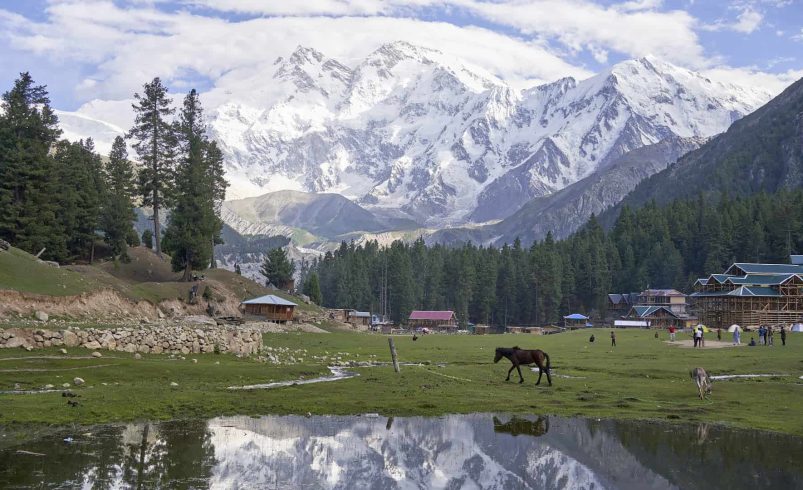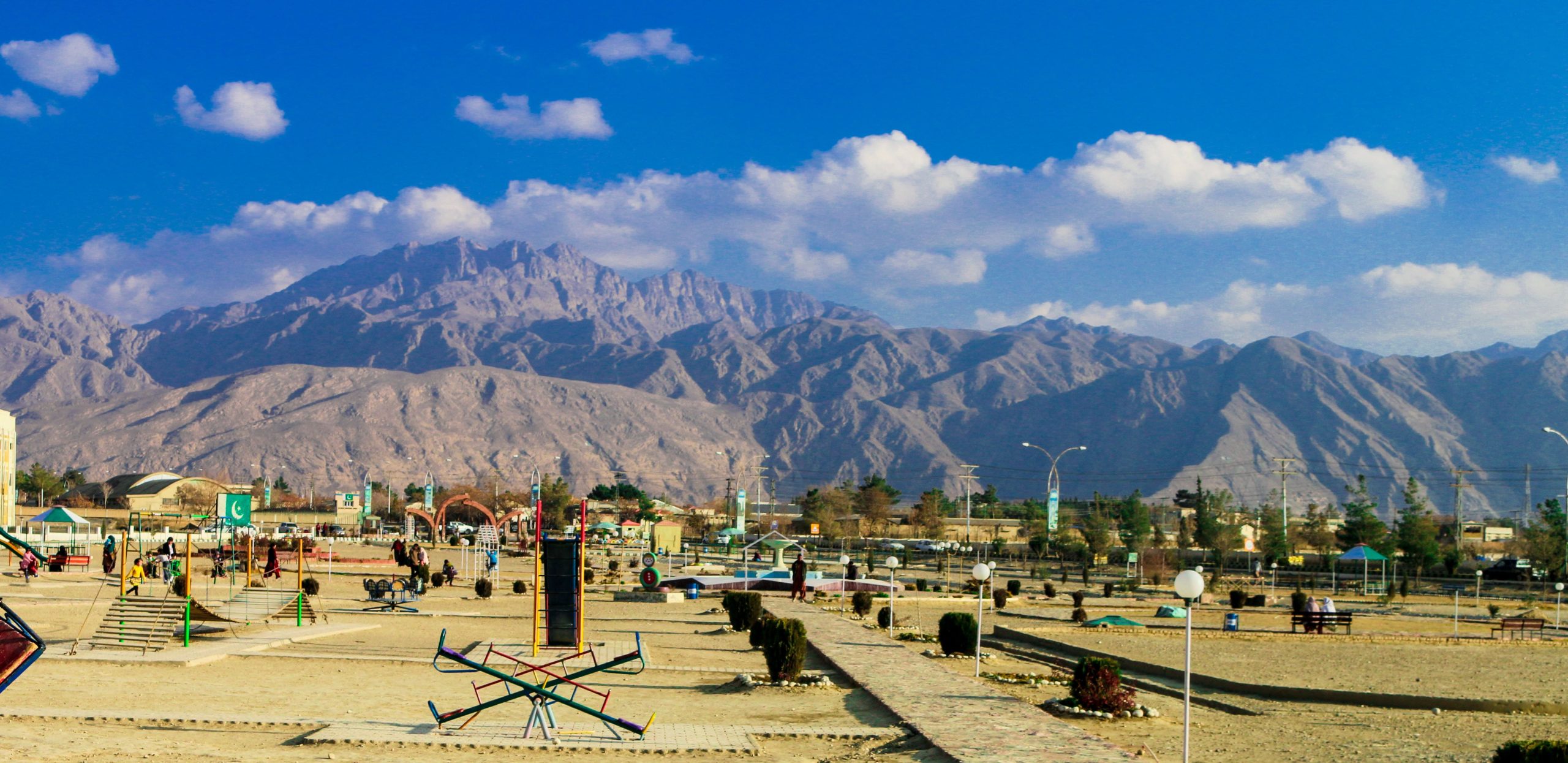
- February 27, 2025
Introduction
Located in the Gilgit-Baltistan region of Pakistan, Hunza Valley is a hidden gem that attracts tourists from around the globe. Known for its breathtaking landscapes, snow-capped mountains, crystal-clear lakes, and rich culture, this valley is a paradise for nature lovers and adventurers alike. Whether you’re interested in historical forts, thrilling treks, or simply immersing yourself in the serene beauty of the mountains, Hunza Valley has something for everyone.
History
The history of Hunza Valley dates back thousands of years. It was once an independent princely state until it merged with Pakistan in 1974. Hunza’s strategic location on the ancient Silk Road made it an essential hub for traders traveling between China and South Asia. The valley has seen influences from Buddhism, Islam, and Tibetan culture, evident in its architectural landmarks such as Baltit Fort, Altit Fort, and Ganish Village.
Cultural Heritage
Hunza Valley is home to the Burusho and Wakhi communities, known for their hospitality, unique traditions, and long lifespan. The local people speak Burushaski and Wakhi languages and celebrate various festivals such as the Ginani Festival (Harvest Festival) and Nowruz. Traditional Hunza music, dance, and handicrafts reflect the valley’s rich cultural roots, making it a fascinating destination for cultural enthusiasts.
Best Time to Visit
The best time to visit Hunza Valley depends on what you want to experience:
- Spring (March–May): Witness the mesmerizing cherry blossom season.
- Summer (June–August): Enjoy pleasant weather and lush green landscapes.
- Autumn (September–November): Experience the stunning fall foliage.
- Winter (December–February): Ideal for those who love snowfall and winter adventures.
How to Reach Hunza from Islamabad
- By Air: Take a flight from Islamabad to Gilgit, followed by a 2–3 hour drive to Hunza.
- By Road (Bike or Car): Travel on the Karakoram Highway (KKH) covering approximately 600 km (12-14 hours) with stunning landscapes along the way.
Places to Visit in Hunza Valley
Baltit Fort
Baltit Fort, a 700-year-old architectural masterpiece, stands tall as a symbol of Hunza’s glorious past. Once home to the rulers of Hunza, this ancient fort is now a museum showcasing artifacts, weapons, and historical relics.
- Location: Hunza, Gilgit-Baltistan
- How To Reach: Ride from Islamabad via KKH, then a short trek from Karimabad.
- Key Attractions: Stunning valley views, traditional royal rooms, wooden balconies.
- Best Time to Visit: Spring and summer.
- Activities to Do: Photography, historical exploration, guided tours.
Altit Fort
Altit Fort, older than Baltit Fort, is a 900-year-old fort with a rich history and well-preserved interiors. The fort’s restored royal garden adds to its charm, making it a must-visit attraction in Hunza.
- Location: Hunza, Gilgit-Baltistan
- How To Reach: Same route as Baltit Fort.
- Key Attractions: Historic architecture, royal quarters, ancient watchtowers.
- Best Time to Visit: All year round.
- Activities to Do: Sightseeing, cultural immersion, learning about Hunza’s history.
Passu Cones
Passu Cones, also known as Passu Cathedral, are one of the most striking natural landmarks in Hunza Valley. These jagged, pyramid-like peaks stand tall in the Karakoram Range, creating a breathtaking sight.
- Location: Passu, Upper Hunza, Gilgit-Baltistan
- How To Reach: Ride from Islamabad via Karakoram Highway (KKH). Passu Cones are visible along the highway.
- Key Attractions: Stunning mountain views, photography spots, hiking trails.
- Best Time to Visit: Spring and summer for clear views.
- Activities to Do: Trekking, photography, camping.
Attabad Lake
Attabad Lake is a stunning turquoise-blue lake that was formed in 2010 due to a massive landslide. It has now become one of Hunza’s top attractions.
- Location: Gojal, Hunza, Gilgit-Baltistan
- How To Reach: Ride via KKH from Islamabad, approximately 12-14 hours.
- Key Attractions: Crystal-clear waters, boating, fishing.
- Best Time to Visit: Summer for water activities.
- Activities to Do: Boating, jet skiing, kayaking.
Hussaini Suspension Bridge
One of the world’s most thrilling bridges, the Hussaini Suspension Bridge is an adventurous crossing made of wooden planks and rope.
- Location: Hussaini, Gojal Valley, Hunza
- How To Reach: Ride from Islamabad via KKH, then a short trek.
- Key Attractions: Thrilling experience, scenic views.
- Best Time to Visit: Summer for safe crossing.
- Activities to Do: Walking across the bridge, photography.
Eagle’s Nest (Duikar Viewpoint)
Eagle’s Nest, also known as Duikar Viewpoint, offers the most spectacular panoramic views of Hunza Valley and surrounding peaks.
- Location: Duikar, Hunza
- How To Reach: Short uphill ride from Karimabad.
- Key Attractions: Sunrise and sunset views, mountain scenery.
- Best Time to Visit: Early morning or evening for breathtaking views.
- Activities to Do: Photography, hiking, sightseeing.
Khunjerab Pass
Khunjerab Pass is the highest paved international border crossing in the world, connecting Pakistan and China at an altitude of 4,693 meters.
- Location: Pakistan-China Border, Gilgit-Baltistan
- How To Reach: Ride via KKH, around 5-6 hours from Hunza.
- Key Attractions: Border gate, scenic mountains.
- Best Time to Visit: Summer, as winter roads may be closed.
- Activities to Do: Sightseeing, photography.
Ganish Village
Ganish is the oldest settlement in Hunza Valley, dating back over 1000 years. It features ancient watchtowers, mosques, and a UNESCO-listed heritage site.
- Location: Near Karimabad, Hunza
- How To Reach: Short ride from Karimabad.
- Key Attractions: Ancient watchtowers, wooden mosques.
- Best Time to Visit: All year round.
- Activities to Do: Cultural exploration, sightseeing.
Borith Lake
Borith Lake is a serene, high-altitude lake located near Passu Village. It is a peaceful retreat offering spectacular views of Passu Cones.
- Location: Upper Hunza, near Passu
- How To Reach: Short ride from Passu Village.
- Key Attractions: Tranquil waters, birdwatching.
- Best Time to Visit: Spring and summer.
- Activities to Do: Boating, hiking, camping.
Hopper Glacier
Hopper Glacier is a breathtaking glacier in the Hopper Valley of Hunza. It is known for its unique contrast of white and black ice.
- Location: Nagar Valley, near Hunza
- How To Reach: Ride via KKH, then a short trek.
- Key Attractions: Stunning glacier views.
- Best Time to Visit: Summer for trekking.
- Activities to Do: Hiking, photography, sightseeing.
Suggested 6 Days Itinerary from Islamabad
Islamabad to Hunza (Via Karakoram Highway) – Day 1
- Depart from Islamabad early in the morning.
- Travel through Abbottabad, Mansehra, and Chilas.
- Lunch break at Besham or Chilas.
- Arrive in Hunza (Karimabad) by evening.
- Overnight stay in Karimabad.
Exploring Karimabad (Baltit & Altit Forts, Ganish Village) – Day 2
- Visit Baltit Fort, a 700-year-old historical site.
- Explore Altit Fort and the Royal Garden.
- Walk through Ganish Village, the oldest settlement in Hunza.
- Enjoy the sunset at Duikar (Eagle’s Nest).
- Overnight stay in Karimabad.
Passu Cones, Hussaini Bridge & Borith Lake – Day 3
- Drive to Passu Village and witness the stunning Passu Cones.
- Experience the thrill of crossing Hussaini Suspension Bridge.
- Visit the tranquil Borith Lake.
- Return to Karimabad for an overnight stay.
Attabad Lake & Khunjerab Pass Adventure – Day 4
- Boat ride and jet skiing at Attabad Lake.
- Continue towards Khunjerab Pass, the highest paved border crossing in the world.
- Return to Hunza for an overnight stay.
Hopper Glacier Trek & Shopping in Karimabad – Day 5
- Visit the Hopper Glacier, known for its black and white ice formations.
- Explore Karimabad’s local markets for traditional handicrafts.
- Enjoy a dinner with a local Hunzai family.
- Overnight stay in Hunza.
Return to Islamabad – Day 6
- Depart early from Hunza.
- Stop for lunch in Chilas or Besham.
- Arrive in Islamabad by evening.
Emergency Contacts & Health Precautions
Emergency Contacts
- Rescue 1122 (Emergency Services): 1122
- Hunza Police: +92 5813-920100
- Gilgit-Baltistan Tourism Office: +92 5811-920421
- Nearest Hospital (Aliabad, Hunza): +92 5813-920405
- Pak-China Border Control (Khunjerab Pass): +92 5811-960911
Health Precautions
- Altitude Sickness: Acclimatize properly, stay hydrated, and avoid alcohol.
- Weather Preparedness: Carry warm clothing, as temperatures drop suddenly.
- Food & Water Safety: Eat at hygienic places, and drink bottled or boiled water.
- Trekking Safety: Always hire local guides for hikes like Hopper Glacier and Passu.
Travel Tips
- Always check the weather forecast before traveling.
- Cash is essential, as ATMs are limited in remote areas.
- Learn basic Urdu phrases for better communication with locals.
- Respect local culture and dress modestly.
- Avoid traveling at night due to road conditions.
- Try local Hunza cuisine, including Chapshuro and Apricot Soup.
Top FAQs About Hunza Valley
1. Why is Hunza Valley famous?
Hunza Valley is famous for its stunning mountain landscapes, historical forts, and rich culture. It is also known as the Switzerland of Pakistan due to its scenic beauty.
2. What is the best time to visit Hunza Valley?
The best time to visit Hunza Valley is spring (April to June) for cherry blossoms and autumn (September to November) for golden foliage.
3. How long does it take to reach Hunza from Islamabad?
It takes around 12-14 hours by road via the Karakoram Highway (KKH).
4. Is Hunza Valley safe for tourists?
Yes, Hunza Valley is one of the safest destinations in Pakistan, with friendly locals and a peaceful environment.
5. What is the local language spoken in Hunza?
The primary language spoken is Burushaski, but Urdu and English are widely understood.
6. What are the must-visit places in Hunza?
Some must-visit places include Baltit Fort, Altit Fort, Attabad Lake, Passu Cones, and Khunjerab Pass.
7. Are there ATMs in Hunza?
Yes, but availability is limited. It’s best to carry cash in Pakistani Rupees.
8. What should I pack for my Hunza trip?
Pack warm clothes, trekking shoes, sunscreen, and a power bank for a comfortable journey.
9. What is the food like in Hunza?
Hunza’s cuisine includes Chapshuro, Apricot Soup, and Walnut Cakes, which are must-try dishes.
10. Can I visit Hunza in winter?
Yes, but be prepared for heavy snowfall and roadblocks.
Conclusion
Hunza Valley is a dream destination for travelers who love nature, adventure, and cultural exploration. Whether you’re admiring the historical forts, trekking to glaciers, or enjoying the breathtaking scenery, every moment in Hunza is a memory to cherish. With its friendly locals, stunning landscapes, and rich traditions, Hunza Valley is truly Pakistan’s crown jewel. Plan your trip today and experience the magic of Hunza Valley!






